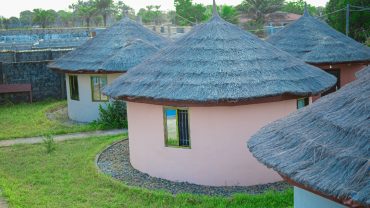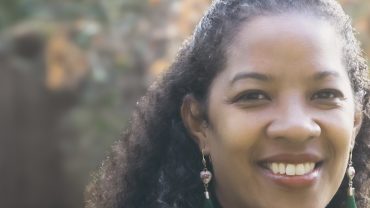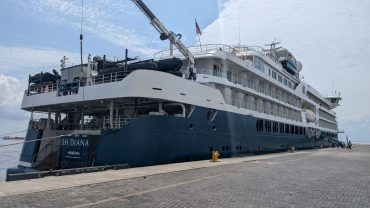Few people know about Sierra Leone’s sweeping many-coloured beaches, its swim-perfect seas and glorious rainforest-mountain backdrops. They don’t know you can dine on fresh-grilled lobster and refresh yourself with a cool beer beside the ocean. They don’t know about the country’s threatened primates and rare exotic birdlife, or that it is home to the region’s highest mountain. They are unaware that its capital is one of the safest cities in Africa and that people dance with a mesmerising lust for life until after dawn. Or that, despite the decade of war, the nation’s tenacity, affection and spirit is what really defines it.
Born of the efforts of three waves of freed slaves from Britain, Canada and Jamaica in the late 18th century, the country’s capital, Freetown, was named for being a singular province of freedom in the midst of a flourishing slave trade. In part because of this dashing history, its poverty and its horrendous war, Salone (as it is affectionately known) conjures up a special sort of love – it is love against the odds, holidays against the grain, belief in the face of disbelief.
Cecil Williams is among those who have been valiantly working to bring that belief to light. He became head of the national tourist board in 1991, the year the war started, and watched as the number of visitors plummeted from close to 100,000 a year to almost zero. Now the number of arrivals has edged up to 4,000 a year, but most are visiting friends or family, or are more likely consultants than carefree holidaymakers.
“Tourism is still virgin here,” Mr Williams explains. “But there’s great enthusiasm and people are starting to come. We could have 10,000 tourism jobs in the next five to seven years but it depends on government support – at the moment we are grossly under-funded.”
Another acolyte of tourism’s uphill struggle is Bimbola Carrol, 32, who left Sierra Leone in 1997 when Freetown was under fire. Just over a year ago he gave up a nine-to-five job in London to go back to his homeland to start up a tourism business. “I always saw myself returning,” says Mr Carrol, who is one of an estimated 50,000 in the diaspora who have returned since the war ended. “It’s down to Sierra Leoneans to rebuild Sierra Leone. We have a responsibility to give back to our society.” Today he employs four people and runs the popular, information-packed Visit Sierra Leone website, which he started in 2004, as well as organising trip itineraries. “It was only two years after the end of the war and at that time no one was talking about tourism,” he says. “But I had a much longer-term view about it: Sierra Leone hasn’t received as much credit as it deserves.”
Tony Blair, who sent in UK troops in 2000 to help bring the fighting to an end, is among those hoping to generate just this sort of credit. This week the former prime minister has been wandering up and down the fine city sands at Lumley beach – a long strip that brings together Freetown’s fishermen, joggers, lovers and sundowners. He’s been hanging with beach entrepreneurs, watching the day’s catch come in and seeing with his own eyes the tourism potential Sierra Leone’s president, Ernest Bai Koroma, hopes to translate into jobs and economic growth.
“There’s no doubting they could transform this into a huge tourism magnet,” Mr Blair said in an interview during his visit. “It is heavily dependent on donor aid and the country needs to be released of this.”
Britain, the former colonial power, today gives more money per person to Sierra Leone than anywhere else – an amount set to rise to £50m next year. Yet the west African country remains bottom of the UN Human Development index, investment shy, with more than 70 per cent of its people living below the poverty line and the world’s highest maternal mortality rate. Unemployment is worryingly high, particularly among potentially volatile young men.
Supporting tourism may pay dividends: the industry will earn sub-Saharan Africa $66bn this year – accounting for 6.7 per cent of the continent’s GDP and directly employing 3.34 million people. In Sierra Leone, the World Travel and Tourism Council says the country already earns $90 million from travel and tourism and is likely to grow at 5.8 per cent a year for the next decade.
Mr Blair, who has placed nine experts from his advisory group into Sierra Leone’s government to help improve decision-making and boost business, says he is pinning his hopes on a November investment conference to drum up much-needed interest in the sector. His father used to teach at the university and told him about Sierra Leone as a boy.
He said: “The potential is obvious absolutely everywhere but now it needs real investment. It’s critical to provide the infrastructure – the airport, port, making sure the necessary roads are built.”
Getting around the country is hard, electricity and water are in short supply and accommodation often lacks the sumptuous appeal oflow-impact boutique tourism developed elsewhere in the continent. But the country offers something else – extraordinary natural beauty, and heart.
In researching the first-ever guidebook to the country, people willingly offered me help, advice and displayed a reassuring devotion to their land. When I thought it might be possible to scale the famed Mount Bintumani from the east rather than the west as everybody seemed to do, I turned up unannounced at a nearby village where elders pointed out the mountain’s magnificent silhouette and showed me the way. Keen to reach the vine-covered crumbling remains of a slave castle sat snug on Bunce Island in the middle of the Sierra Leone River, I watched its elderly caretaker gingerly bail out water from his leaky canoe.
The country’s heritage is both moving and horrifying: the dilapidated slave fortress is thought to have sent 50,000 slaves mostly to north America, throughout 140 years of operation, linking black Americans more closely to Sierra Leone than any other African country. Among them is US actor and Grey’s Anatomy star Isaiah Washington, who traced his DNA to Sierra Leone and has since donated money to historians devoted to bringing life on Bunce Island to light.
There are an estimated one million Sierra Leoneans living abroad who send back $250m every year. And while personal links are likely to form a strong link for many visitors, there are already some travellers with no ties at all who are discovering the charms of the country.
“We wanted to go somewhere before all the tourists got there,” said Claire Thomas, 33, a Londoner who holidayed in Sierra Leone earlier this year with her boyfriend.
The couple stayed on an exotic island filled with fresh figs, guavas and starfruit, spent the night in an eco-lodge at a chimpanzee sanctuary, swam beside the fine white sands of River No 2 – the setting for those Bounty adverts – took a boat trip down a mangrove-lined river, watched tailors, vegetable growers and bakers at work, and even found people willing to accommodate their vegan diet – impressive in a land where meat, fish and diary products are prized protein.
For Ms Thomas, who works for a development charity, it was also a chance to contribute something meaningful. “We wanted to give something back rather than giving aid,” she says. “I just thought it was amazing, I was really surprised. It was really peaceful and relaxing and we didn’t even get one mosquito bite. Everyone was so genuine and friendly and I felt really safe.”
Ms Thomas, part of a first trickle of tourists, booked her trip with one of one of two UK tour operators who are taking a chance on this post-war west African state. “I came into tourism not to book flights but for economic development,” says Judith
De Witt, director of the UK’s Rainbow Tours, which offers week-long trips to Sierra Leone from around £1,500. “Sierra Leone was stable but wasn’t getting the kind of coverage it deserved. It reminds me of the good old days of Madagascar.” Now, finally, Sierra Leone’s chance may be coming.
Katrina Manson is co-author of the Bradt Guide to Sierra Leone, published on 15 May
https://www.independent.co.uk/news/world/africa/paradise-regained-in-sierra-leone-1677671.html




Comment (0)